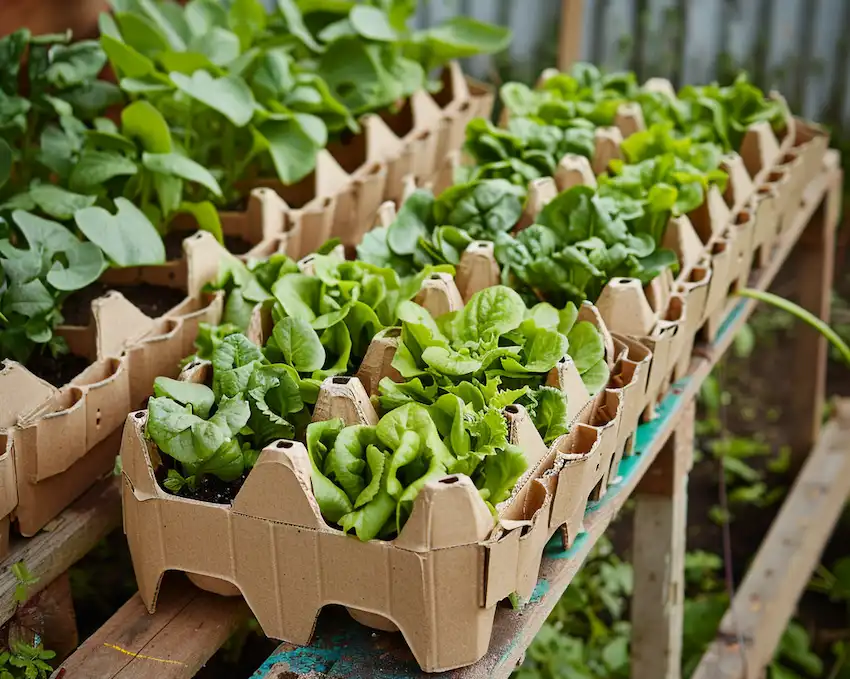Growing your own vegetables is not only rewarding but also eco-friendly, especially when you utilize recycled materials like egg boxes and bags. Here’s a guide on how to get started with eco-friendly gardening using these items:
Materials Needed:
- Egg boxes (cardboard)
- Recycled bags (plastic or fabric)
- Soil
- Vegetable seeds or seedlings
- Watering can or hose
- Scissors (if using plastic bags)
Steps:
1. Prepare Your Egg Boxes:
- Collect cardboard egg boxes from your kitchen or ask friends and neighbors to save them for you.
- Cut the lid off the egg boxes, leaving only the bottom portion.
- Poke small holes in the bottom of each egg compartment for drainage.
2. Choose Your Vegetables:

- Select vegetables that are suitable for container gardening such as lettuce, radishes, herbs, and small varieties of tomatoes or peppers.
- Consider the space and sunlight requirements of each vegetable when planning.
3. Fill Egg Boxes with Soil:
- Fill each compartment of the egg boxes with potting soil, leaving a small gap at the top.
- Press the soil down gently to remove any air pockets.
4. Plant Your Seeds or Seedlings:
- Plant seeds or transplant seedlings into the soil-filled compartments according to the planting instructions for each vegetable.
- Water the soil thoroughly after planting.
5. Prepare Recycled Bags:
- If using plastic bags, poke several drainage holes in the bottom with scissors.
- If using fabric bags, ensure they have drainage holes or are made of breathable material.
6. Fill Bags with Soil:
- Fill the recycled bags with potting soil, leaving a few inches of space at the top.
7. Plant More Vegetables:
- Plant additional vegetables in the bags, following the spacing recommendations for each plant.
- Water the soil well after planting.
8. Care and Maintenance:
- Place your egg box and bag gardens in a sunny spot that receives at least 6-8 hours of sunlight per day.
- Water the plants regularly, keeping the soil consistently moist but not waterlogged.
- Monitor for pests and diseases, and take appropriate action if needed.
- Fertilize as necessary with organic fertilizers or compost.

9. Harvest and Enjoy:
- As your vegetables grow, harvest them as needed for fresh, homegrown produce.
- Enjoy the satisfaction of growing your own food while minimizing waste and promoting eco-friendly gardening practices.
By utilizing egg boxes and recycled bags, you not only reduce waste but also create a sustainable and eco-friendly garden that yields delicious, homegrown vegetables. Happy gardening!
